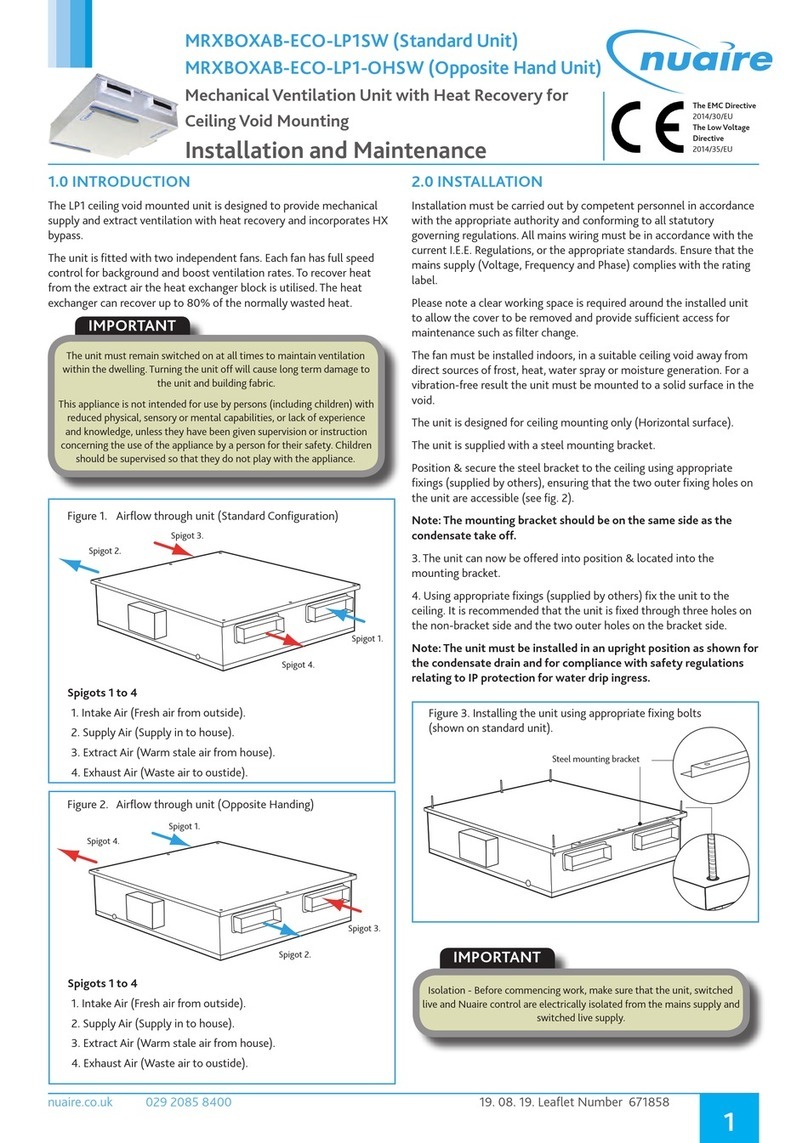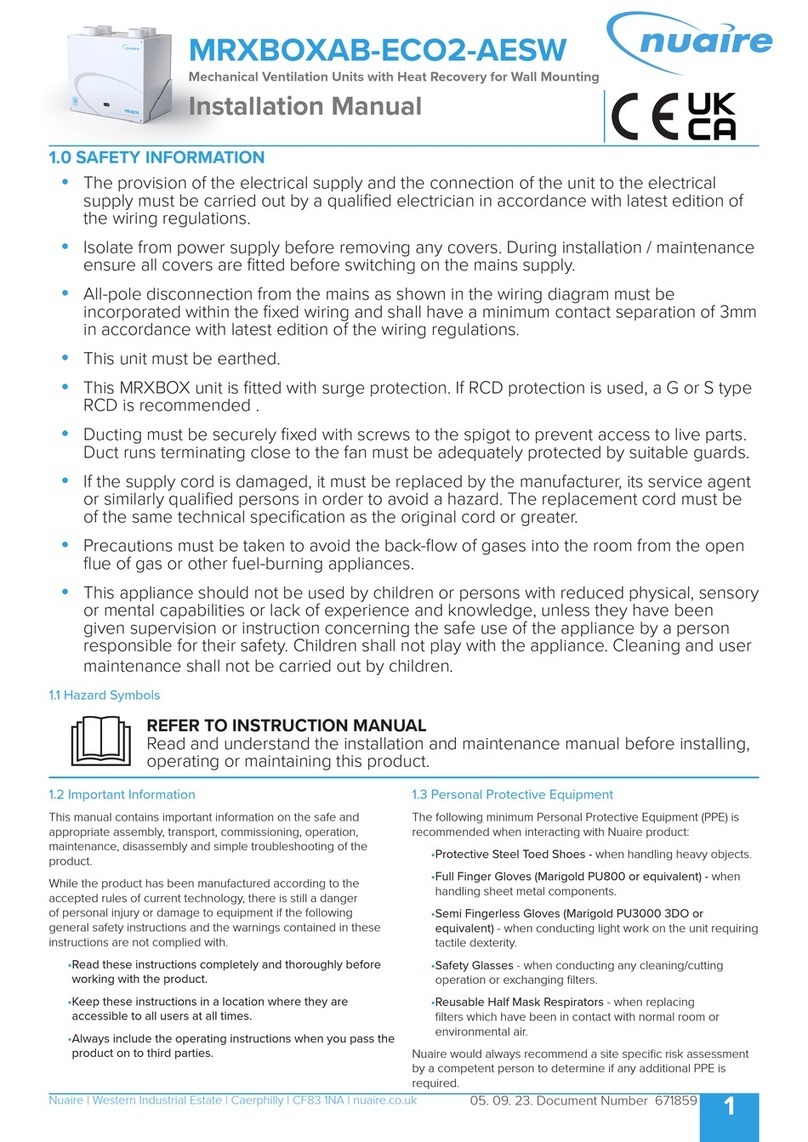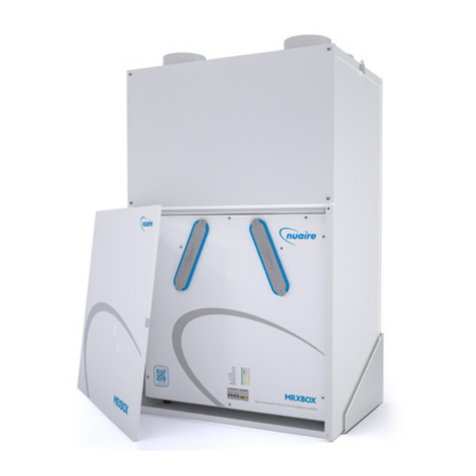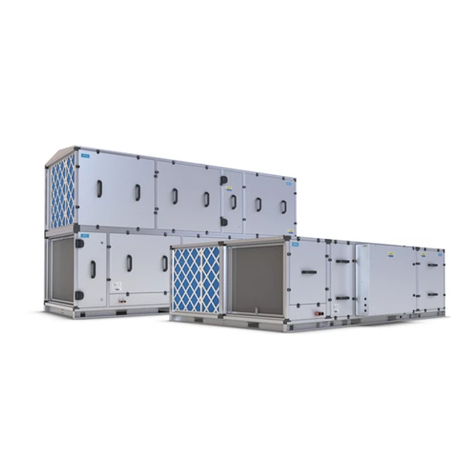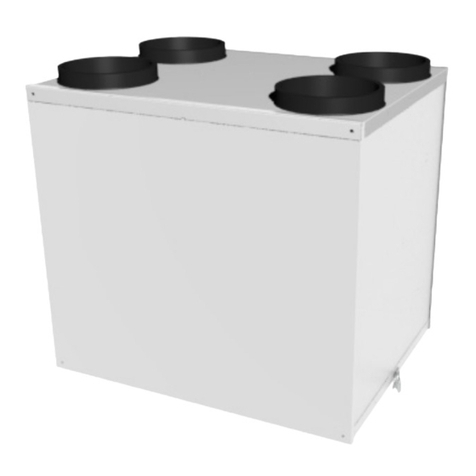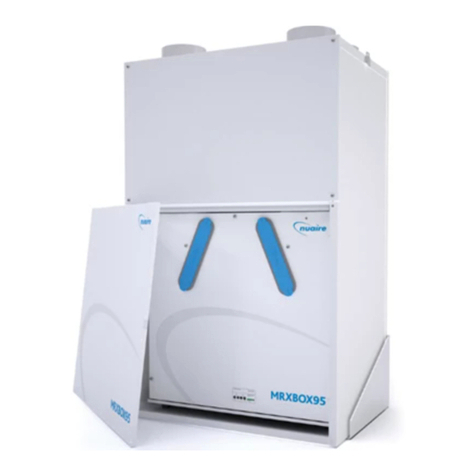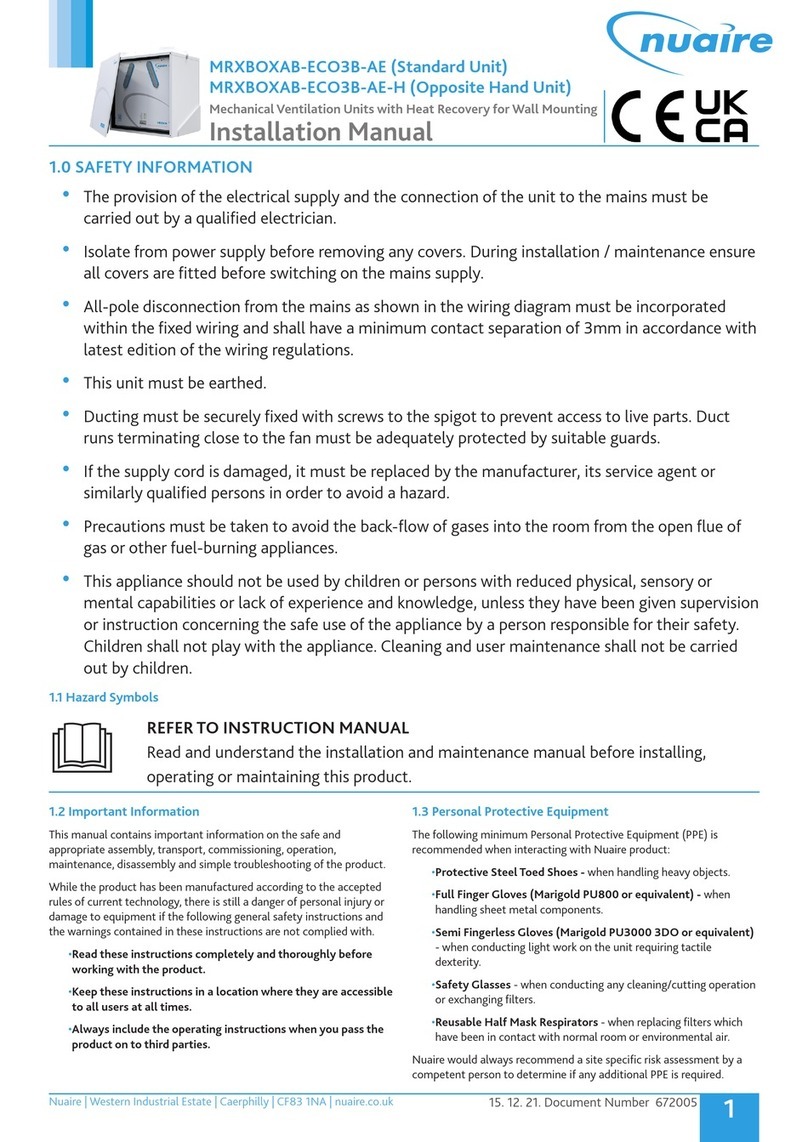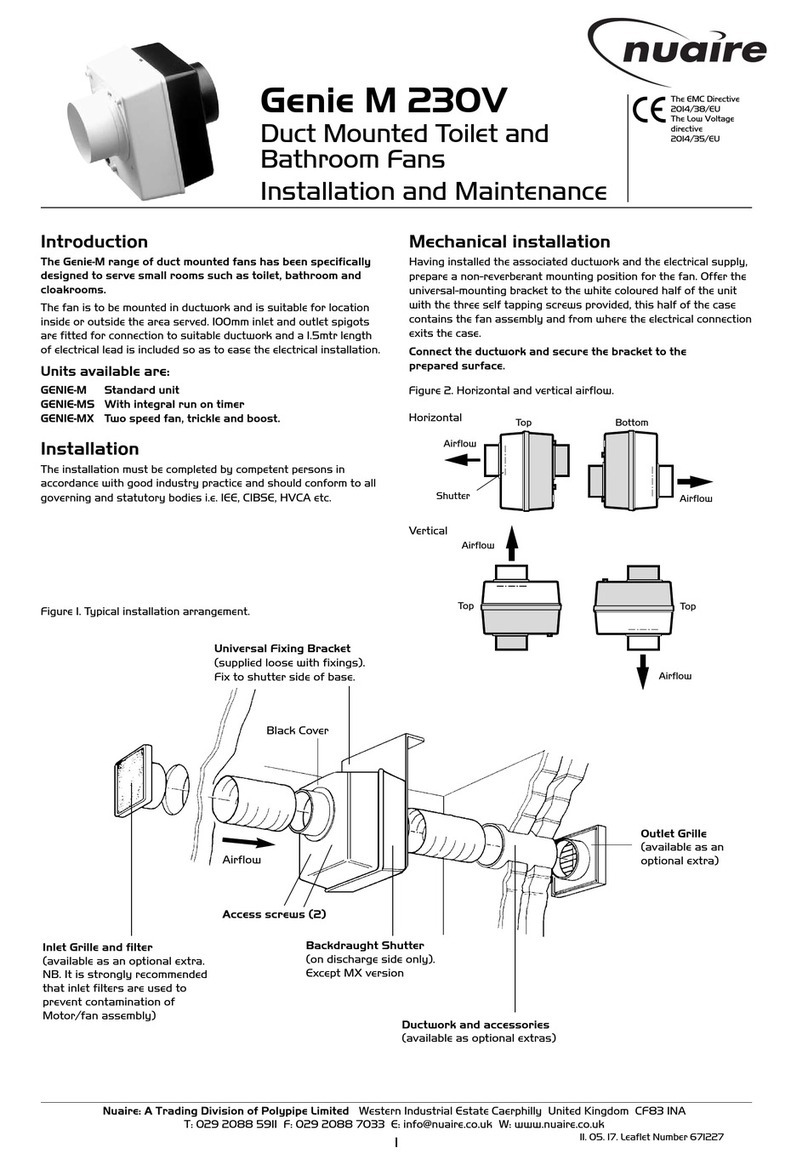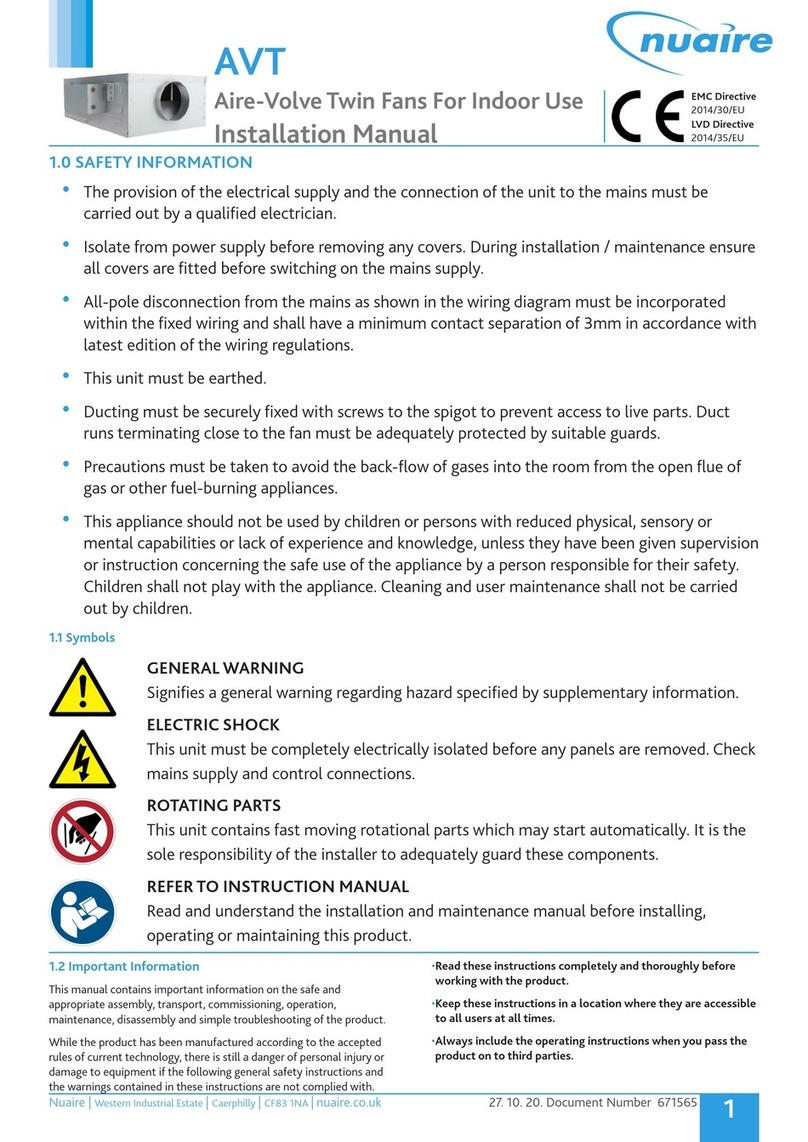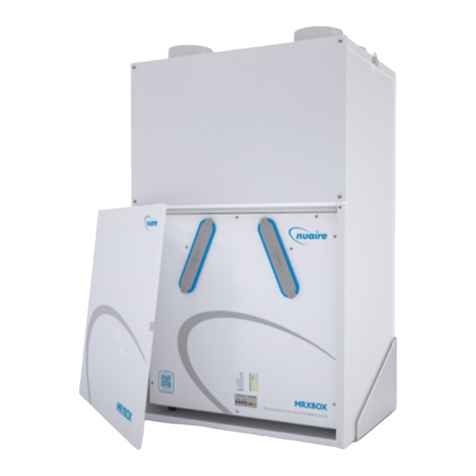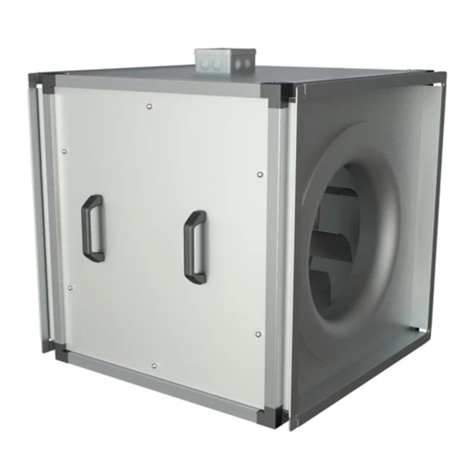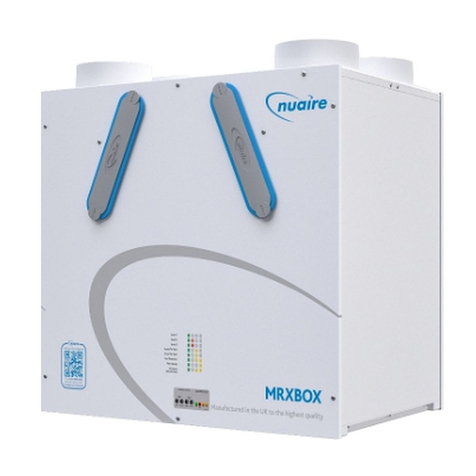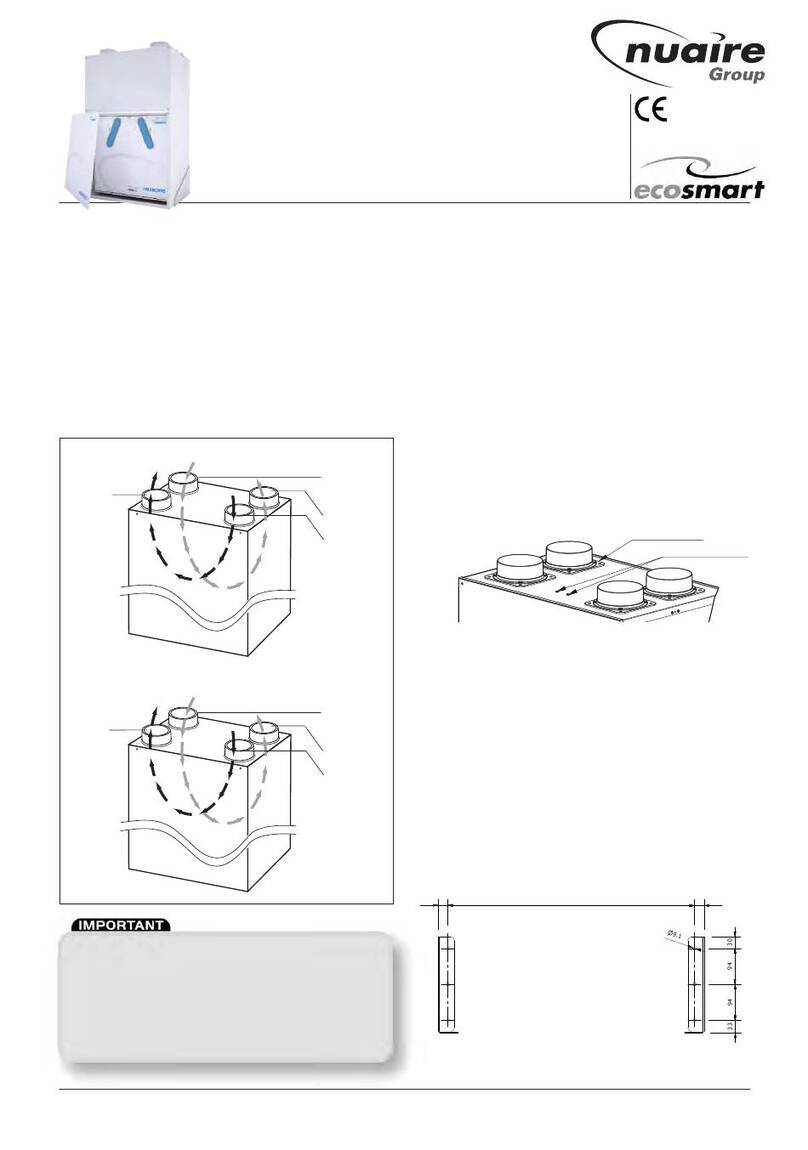
04. 02. 20. Document Number 671635 4
Nuaire | Western Industrial Estate | Caerphilly | CF83 1NA |nuaire.co.uk
SVTC
Installation Manual
iii. Bearing check (C3 or C4 play)
Run the motor during each maintenance visit. When the motor is cold,
a high level of noise is caused by the texture of the grease. This does
not indicate a bearing fault.
iv. S2 duty only:
The bearings must be replaced by an identical type every 5 years.
Ensure the motor runs normally when switched on for a few
minutes.
v. Fixing Check
During regular maintenance, check all fixtures and fittings to ensure
they have remained secure and in good working order.
S1 duty and Emergency in S2 duty:
a) Permanently greased bearings.
300°C or 400°C range; replace on 2 pole motors after 10,000 hours of
operation and on motors with 4 poles or more after 20,000 hours.
b) Regreaseable bearings
The information on the motor nameplates must be strictly respected
(grease quantity, grease quality and regreasing frequency). The bearings
must be replaced after 20,000 hours of operation.
8.0 MAINTENANCE
It is important that maintenance checks are recorded and that the
schedule is always adhered to, in all cases, the previous report should
be referred to.
8.1 Routine Maintenance (Every 3 Months)
•Clean all areas of unit and treat any areas of corrosion.
•Check all access doors for leakage and if necessary locks should be
adjusted and any replacement gasket materials should be replaced
as required.
8.2 Annually
•Thoroughly inspect the unit and its components for corrosion,
acting immediately to treat/restore any damaged areas.
•All electrical terminals within the unit should be tightened.
•Check all earth connections.
8.3 Motor / Impeller Removal
If the motor or impeller has to be removed for cleaning the following
procedures are recommended:
Inspection of the motor/impeller must be made by using the intake and
discharge openings.
•Motor connection cables to be unfastened within metal isolator
box (A).
•Taking care, feed the cable contact back into the unit casing.
•Before loosening bolts (B) of the motor impeller (C) care must be
taken to prevent the unit from falling down - e.g. by using a lifting
device or elevating platform.
•To remove motor/impeller - loosen bolts (B). Before loosening
bolts (B) of the motor impeller (C), care must be taken to
prevent the unit from falling down i.e. by using a lifting device
or elevating platform.
•Remove impeller from unit (C) by lowering it out of casing.
•Re-fitting the assembly is achieved by performing the above
process in reverse order.
6.2 Start Up Procedure
Ensure that the impeller rotation follows the label arrow indicator
on the casing. Should the direction be incorrect on three phase units,
reverse any two of the supply leads. Care should be taken to set correct
rotation as incorrect rotation may result in damage to the motor.
Equipment should be run for approx. 30 minutes to ensure correct
operation. If any fault occurs, the equipment should be switched off. Do
not re-start until the fault has been rectified.
7.0 SPECIFIC COMMISSIONING AND SERVICING
REQUIREMENTS
Motors for Smoke Extract Fans
Exposure temperature/time: 300°C for 2 hours / 400°C for 2 hours
These motors are used to provide a SAFETY FUNCTION for people
in the event of fire in public premises or in the home: they are
therefore subject to strict constraints concerning their operating and
maintenance.
Operating Constraints
i. Check on the nameplate that the selected motor corresponds to
the maximum exposure temperature and duration.
ii. Non ventilated motors MUST be placed in the airflow from the
driven fan. Ventilated motors can be placed outside the flow.
iii.AFTER THE MOTOR HAS BEEN SUBJECTED TO ONE EMERGENCY
DUTY OPERATION, IT MUST BE REPLACED.
iv.With variable speed control. Ensure that the maximum speed never
exceeds the speed of the motor supplied by the mains and that the
delivered power corresponds to the previous definitions.
These qualifications ensure the qualification of the driven fan by
the manufacturer.
Maintenance Constraints
Regular service visits must be performed on the installation AT
LEAST EVERY 6 MONTHS, incorporating the following checks:
i. Checking insulation resistance (R>100 MOhms, 500V DC)
•If the drain holes are blocked, open them to eliminate any
accumulated condensation.
•If R<100 MOhms, dry the stator in an oven and check the
insulation resistance. If the fault persists, replace the stator.
•The stator must be replaced 5 years after installation or after
20,000 hours of operation.
ii. Cooling check
•Ensure there is no dust or grease in the entire ventilation circuit
(housing fins, motor cover/fan if fitted driven fan).
•Ensure the motor runs normally when switched on for a few
minutes.
Total length of motor leads should not exceed 50 metres. If a screened
motor cable is used, maximum length should be 25 metres. Consult
our Technical Department if you wish to use longer leads. Inverters are
configured to suit specific fans and control applications as described on
the Customer Order free of charge.
IMPORTANT
For good EMC engineering practice, any sensor cables or
switched live cables should not be placed within 50mm of
other cables or on the same metal cable tray as other cables.
